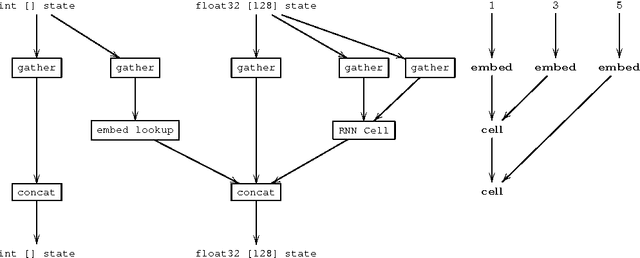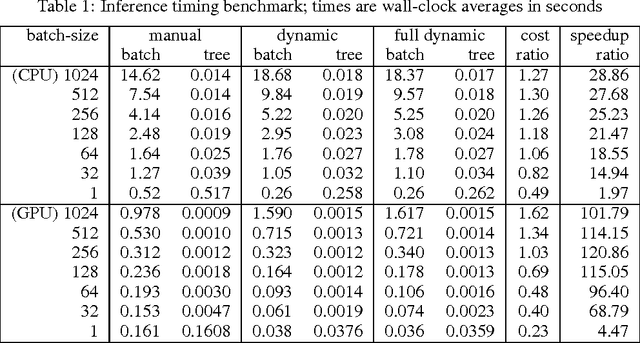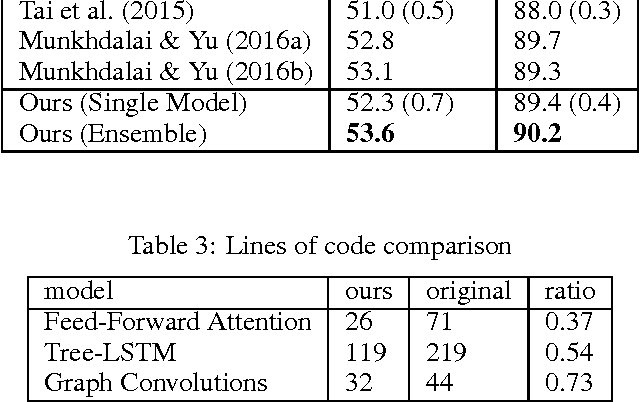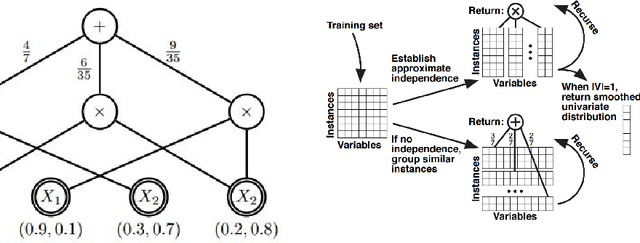Moshe Looks
Deep Learning with Dynamic Computation Graphs
Feb 22, 2017



Abstract:Neural networks that compute over graph structures are a natural fit for problems in a variety of domains, including natural language (parse trees) and cheminformatics (molecular graphs). However, since the computation graph has a different shape and size for every input, such networks do not directly support batched training or inference. They are also difficult to implement in popular deep learning libraries, which are based on static data-flow graphs. We introduce a technique called dynamic batching, which not only batches together operations between different input graphs of dissimilar shape, but also between different nodes within a single input graph. The technique allows us to create static graphs, using popular libraries, that emulate dynamic computation graphs of arbitrary shape and size. We further present a high-level library of compositional blocks that simplifies the creation of dynamic graph models. Using the library, we demonstrate concise and batch-wise parallel implementations for a variety of models from the literature.
A Minimalistic Approach to Sum-Product Network Learning for Real Applications
Apr 24, 2016


Abstract:Sum-Product Networks (SPNs) are a class of expressive yet tractable hierarchical graphical models. LearnSPN is a structure learning algorithm for SPNs that uses hierarchical co-clustering to simultaneously identifying similar entities and similar features. The original LearnSPN algorithm assumes that all the variables are discrete and there is no missing data. We introduce a practical, simplified version of LearnSPN, MiniSPN, that runs faster and can handle missing data and heterogeneous features common in real applications. We demonstrate the performance of MiniSPN on standard benchmark datasets and on two datasets from Google's Knowledge Graph exhibiting high missingness rates and a mix of discrete and continuous features.
 Add to Chrome
Add to Chrome Add to Firefox
Add to Firefox Add to Edge
Add to Edge